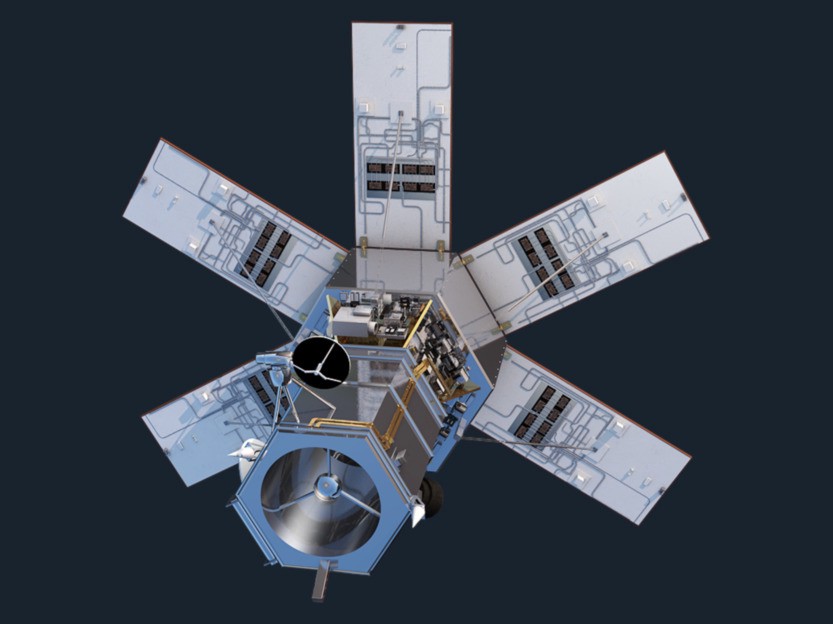The WorldView-4 satellite was previously known as GeoEye-2. Its spatial resolution is 31 centimeters in PAN mode and 1.23 meters in MS mode. The satellite operates at an expected altitude of 617 km. WorldView-4 data is used by the US National Security services. The satellite also provides data to commercial customers worldwide. DigitalGlobe sells data in different tiers. Customers can choose the product that is best suited for their needs.
It is a space telescope
The launch of the WorldView-4 satellite by the United Launch Alliance was delayed for months after the company’s plan to use the booster for the Mars InSight mission was shelved. Instead, the company chose to launch the WorldView-4 satellite, which is the successor to the WorldView-3 satellite. It uses many of the same systems as its predecessor and will operate in the DigitalGlobe constellation at an altitude of 617 kilometers.
Worldview-4 satellite imagery was originally known as the GeoEye-2 satellite and was ordered by GeoEye Inc. in October 2010. In early 2013, the company changed its name to DigitalGlobe and was allowed to sell more detailed imagery. The resulting WorldView-4 satellite was launched in August 2014 and will provide multispectral and panchromatic resolution of up to 30 centimeters. It will also offer enhanced spectral data.
It has an 800 Mbps radio transmitter
WorldView-4 is the fourth satellite in the series to have an 800 Mbps radio transmitter. The satellite launches on an Atlas V launch vehicle. It uses the same technology as a mobile phone communicating with a Wi-Fi router. With this technology, the WorldView-4 satellite can transmit images several hundred miles straight up and a few thousand miles away on the side. Hence, the WorldView-4 satellite has the ability to send images at a speed equivalent to the fastest Wi-Fi connection.
The WorldView-4 satellite has a sexy, compact design and a high-bandwidth, long-range radio transceiver. It features high-quality imagery in the form of maps, satellite imagery, satellite-borne GIS data, and other products. Currently, the company has a fleet of five satellites, including two that are fully operational, the WorldView-4 and the WorldView-5. The two satellites were launched in November 2016.
It has a data center
The WorldView-4 satellite has a data center on board. The satellite was previously known as GeoEye-2. This spacecraft is slated to be launched in September. While the satellite is a bit heavy, it is smaller than a large SUV. It is equipped with five fold-out solar arrays and a data center. It also features a tiny photovoltaic power station. The satellite was built to withstand a violent earthquake during launch and is expected to operate for at least ten years in space.
The data is sent back to earth using radio. WorldView-4 can be over any part of the world. It can collect data via Remote Ground Terminals and relay it to DigitalGlobe. This means that if the satellite is over the ocean, it can collect data from there. And it can do so at speeds comparable to the fastest Wi-Fi. As a result, there’s no reason why the WorldView-4’s data center should be slow.
It has a photovoltaic power station
A photovoltaic power station on the Worldview-4 satellite could generate enough power to power the entire satellite. This satellite was originally developed by Lockheed Martin and was named GeoEye-2, but was transferred to DigitalGlobe when it merged with GeoEye in 2013. After a few years of operation, WorldView-4 was declared ready for integration into a rocket. Worldview 4 has two payloads – the geospatial platform and the imaging satellite.
The satellite’s payload capacity is remarkably high, with more than twice the amount of data that QuickBird can gather. The satellites use the same avionics package as Juno, and the photovoltaic power station on the Worldview-4 satellite will help the Earth observer project in new and improved ways. The satellite is currently positioned in a sun-synchronous orbit at 617 km, allowing it to collect data and measurements of Earth’s climate.
It offers exceptional geolocation accuracy
The WorldView-4 satellite was launched on November 11, 2016, aboard an Atlas V rocket from Vandenberg Air Force Base in California. It offers exceptional geolocation accuracy, and its operators can map manmade and natural features within four meters of the actual location. It can revisit a point every 4.5 days and carries out geospatial missions at high altitudes. WorldView-4 is the first satellite of its kind and is expected to deliver unprecedented geographic information for decades to come.
With exceptional geolocation accuracy, the WorldView-4 satellite can capture images of nearly any location on the planet. Customers can choose from BASIC and GeoProfessional products, which offer various image resolutions. The satellite can capture data from as many as several hundred miles up, or up to a thousand miles to the side. It can even transmit the data at speeds comparable to those of the fastest Wi-Fi. The data from WorldView-4 can be relayed back to DigitalGlobe via Remote Ground Terminals.


